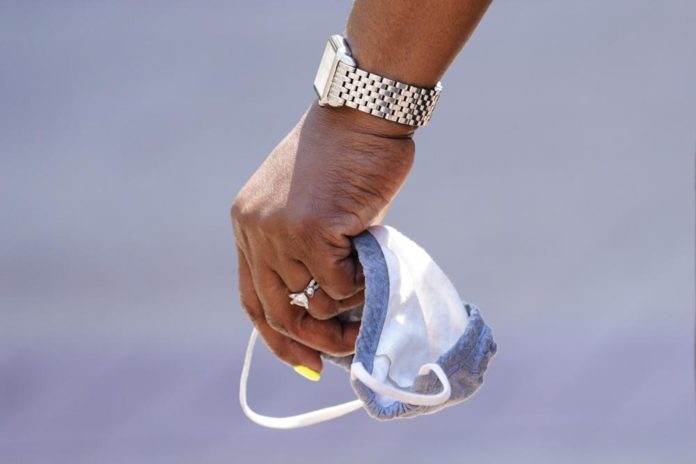
Arizona Gov. Doug Ducey on Wednesday ended the state of emergency he declared at the start of the coronavirus pandemic more than two years ago.
The formal end of the statewide emergency came as COVID-19 cases and hospitalizations dip to levels not seen since the summer of 2020. But deaths are falling at a slower pace.
It was initially put in place to allow the Department of Health Services to coordinate with hospitals and other medical providers to respond to an expected influx of COVID-19 cases and require them to report on hospital visits, admissions and capacity. The initial order also required free COVID-19 testing, lowered co-pays for virtual medical visits, and waived some licensing requirements for medical workers.
The Republican governor later used the emergency powers to close schools and businesses, call up the National Guard, allow emergency licensing of health professionals, and to take dozens of other actions.
Some Republicans in the GOP-controlled Legislature erupted in fury at the governor’s business closure and other orders, advancing bills to block them in the future. On Wednesday, Ducey signed a bill that bars counties and cities from closing businesses during a state of emergency. The bill does not apply to Ducey or subsequent governors.
Virtually all of the executive orders issued under the umbrella of the emergency declaration have been rescinded over time. Last week, Ducey signed legislation that will allow nurses, doctors, and other medical workers issued temporary licenses to keep them until the end of the year if his emergency declaration were to end.
That was one of the last steps needed before he could formally end the emergency. With the end of the emergency declaration, requirements for hospitals to report on COVID-19 patients also ended, but the state’s Medicaid program is paying them to continue that reporting.
“This virus isn’t completely gone, but because of the vaccine and other life-saving measures, today we are better positioned to manage and mitigate it,” Ducey said in a statement.
Both the governor and the association that represents the state’s major hospitals noted that new surges could happen and it’s important to remain on guard.
“While we are relieved to see the conclusion of a two-year public health emergency and response effort, we know we aren’t out of the woods yet,” Arizona Hospital and Healthcare Association President and CEO Ann-Marie Alameddin stated.
The Associated Press had documented just 11 cases of COVID-19 and no related deaths when the order was issued on March 11, 2020. Since then, the statewide toll has been staggering. The state of about 7.2 million residents reached a milestone of 2 million confirmed COVID-19 cases in the latest state report issued Wednesday that also saw deaths top 29,000.
The number of new infections and additional deaths continued to decline along with virus-related hospitalization levels, according to public health officials and newly released data.
The state Department of Health Services on Wednesday added 10,143 additional cases in its weekly update but said most of those additional cases added to the pandemic total “date back to October and result from a provider resolving an electronic reporting issue.”
Cases reported by the weeks they occurred continue to decline since a major peak in January.
With the newly reported cases and 385 additional deaths, the state’s pandemic totals rose to 2,007,180 cases and 29,268 deaths.
Meanwhile, there were 429 COVID-19 patients occupying inpatient beds in hospitals statewide as of Tuesday. That’s about one-eighth as many during the height of the omicron wave. Sharp decreases also have been seen in cases and deaths.
The governor said that Arizona was challenged by the virus, and no corner of the state or nation was spared.
“But we met that challenge head-on by prioritizing lives, livelihoods, and individual liberties,” Ducey said. “The time is right to move forward.”
Arizona’s COVID-19 case rate is 11th highest among states and its death rate is third highest, according to federal Centers for Disease Control and Prevention data.
The state’s pandemic case total reached 1 million late last August.














